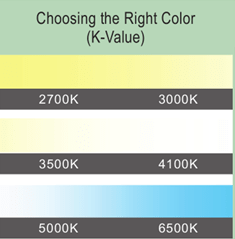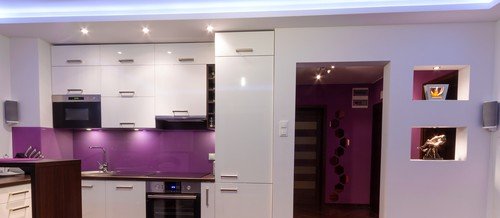Changing consumer buying habits can be challenging. We quickly embrace new concepts like mobile technology because there is a cool factor. At the same time, we can be somewhat clingy when it comes to basic consumer products. This has been the case with upgrading our homes to energy efficient LED lighting.
Forget the CFLs
Compact fluorescent lights or CFLs were a popular energy efficient lighting choice when incandescent lights began their phase out. CFLs use about 75% less energy and last up to 10 times longer than incandescent lights. However, they also had to warm up to achieve their full brightness, were not dimmable, and required special disposal.
The only alternative was LED replacement lights. LEDs were initially much more expensive than CFLs, gave off a bluish light, and were only available in limited sizes and shapes. Technology advances and increased supply have largely eliminated these drawbacks. CFLs, however, never overcame their limitations. A trip to your local home improvement store will show that shelf space for light bulbs is dominated by LEDs. Incandescent light supplies are dwindling and CFLs are losing popularity.
Choosing LED Replacement Lights
The good news is that prices for LED lights are much more reasonable than they were a year or two ago. They are also available in a wider variety of sizes, shapes, colors, and bases. When shopping for incandescent lights, we based our decisions on wattage and color (warm white, cool white, bright white). With LED replacement lights, there are two important selection criteria other than size and shape.
The first is the number of lumens, which is measure of light output. Instead of buying lights based on how much energy they use (watts), you now make your selection based on light output (lumens). Look for the Lighting Facts label on the LED package. You will see the number of lumens next to the word “Brightness.” For reference, a 60-watt incandescent bulb had a light output of around 800 lumens while a 75-watt incandescent bulb rated around 1100 lumens.

The second thing to look for is color. On the Lighting Facts label, this is noted as “Light Appearance.” Higher values represent cooler (bluer) light while lower values represent a warmer (yellower) light. The traditional warm white incandescent bulb had a value about 2700 K. If you are looking for a brighter light, go for a higher K-value. K-values in the 7500 range approach natural sunlight and are probably not suitable for your home. Fortunately, many home improvement retailers have displays to help you judge what light appearance works best for you.
Install and Save
Pick the right size, shape, and base for your light fixture. Choose the replacement light with the appropriate number of lumens. Then make sure your light has the desired color appearance to suit your preference. It really is that simple. LED lights will significantly reduce the amount of energy you use for lighting (up to 80%) and will last up to 20 years or longer.


